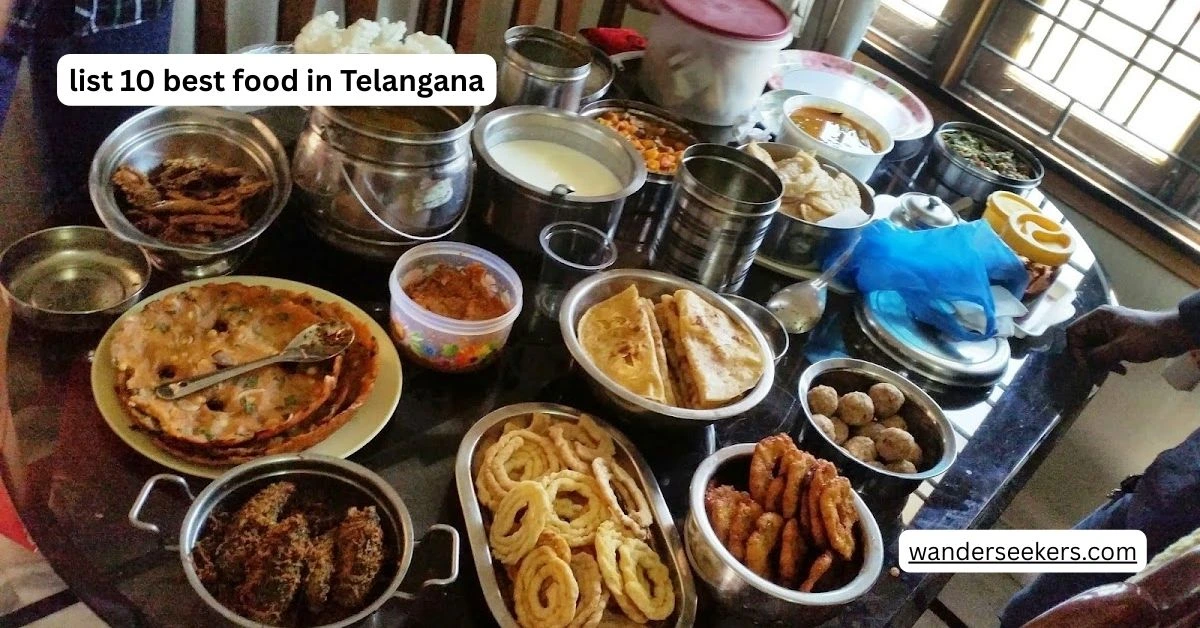Telangana’s culinary heritage is deeply rooted in its traditions, flavors, and bold use of spices. Here’s a deep dive into 10 of the best foods from Telangana, exploring their origins, ingredients, and significance.
Table of Contents
1. Hyderabadi Biryani
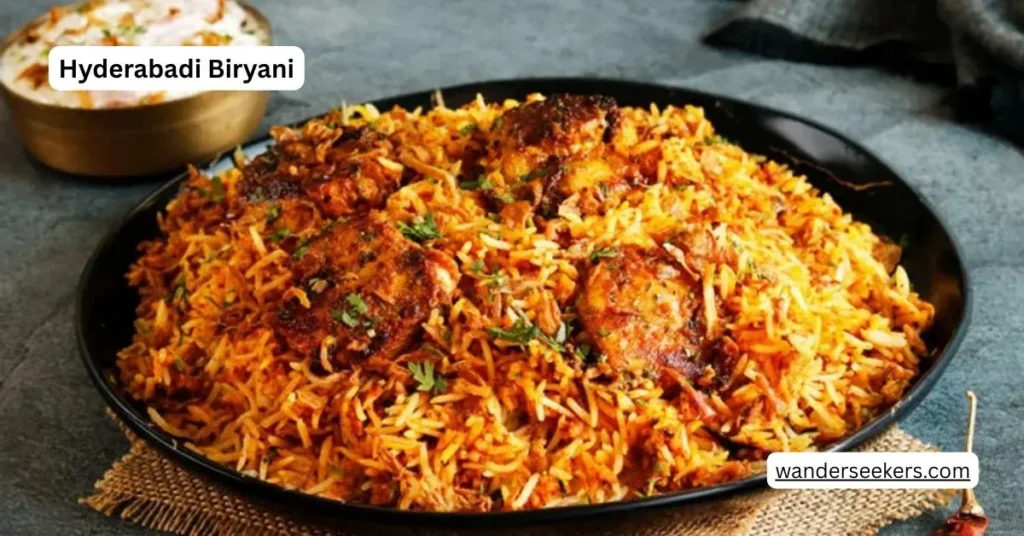
Hyderabadi Biryani is a royal and aromatic rice dish that originated in the kitchens of the Nizams of Hyderabad. Known for its rich flavors and fragrant spices, this biryani is prepared using long-grain basmati rice, tender meat (usually goat or chicken), yogurt, fried onions, and a blend of traditional spices like cardamom, cloves, and cinnamon. The dish is cooked using the dum method, where the ingredients are layered and slow-cooked in a sealed pot, allowing the flavors to infuse deeply. There are two main types—Kachchi Biryani, where raw marinated meat is cooked with rice, and Pakki Biryani, where the meat is pre-cooked before layering with rice. Hyderabadi Biryani is often served with Mirchi Ka Salan (spicy chili curry) and Raita, enhancing its taste. Whether enjoyed at a heritage restaurant or a festive gathering, this dish remains an iconic part of Indian cuisine.
2. Sarva Pindi
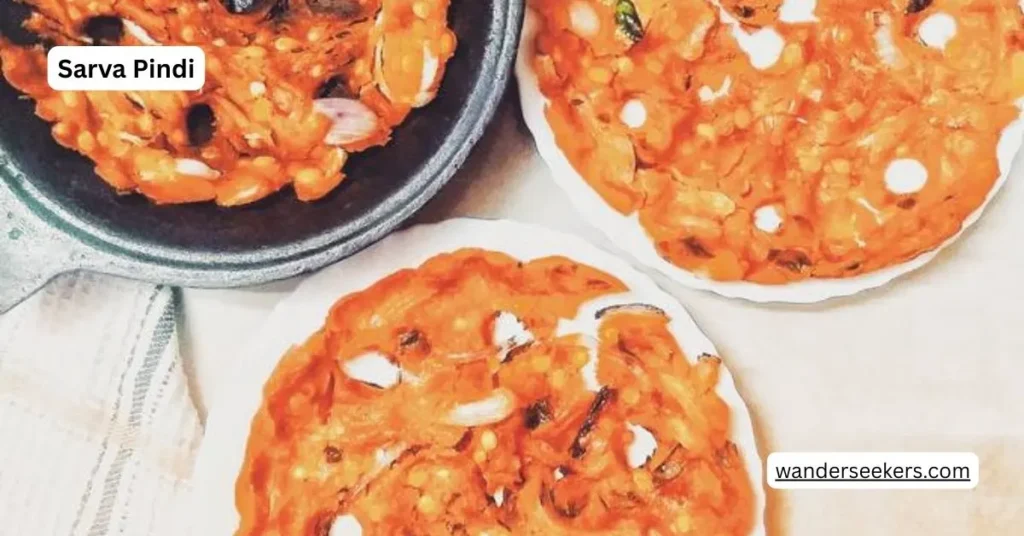
Sarva Pindi is a traditional Telangana snack, known for its crispy texture and bold flavors. This savory, circular-shaped pancake is made from rice flour, chana dal (lentils), peanuts, sesame seeds, and spices, creating a wholesome and crunchy dish. Unlike regular rotis, Sarva Pindi is slow-cooked in a kadhai, allowing it to develop a deep, nutty aroma while maintaining its crispiness. The preparation involves kneading rice flour with water and spices, then pressing the dough into a pan and cooking it on low heat until golden brown. This dish is often enjoyed as a breakfast or evening snack, paired with pickle or yogurt, enhancing its taste. Sarva Pindi is not just a meal but a symbol of Telangana’s culinary heritage, offering a perfect balance of flavor, nutrition, and tradition.
3. Pachi Pulusu
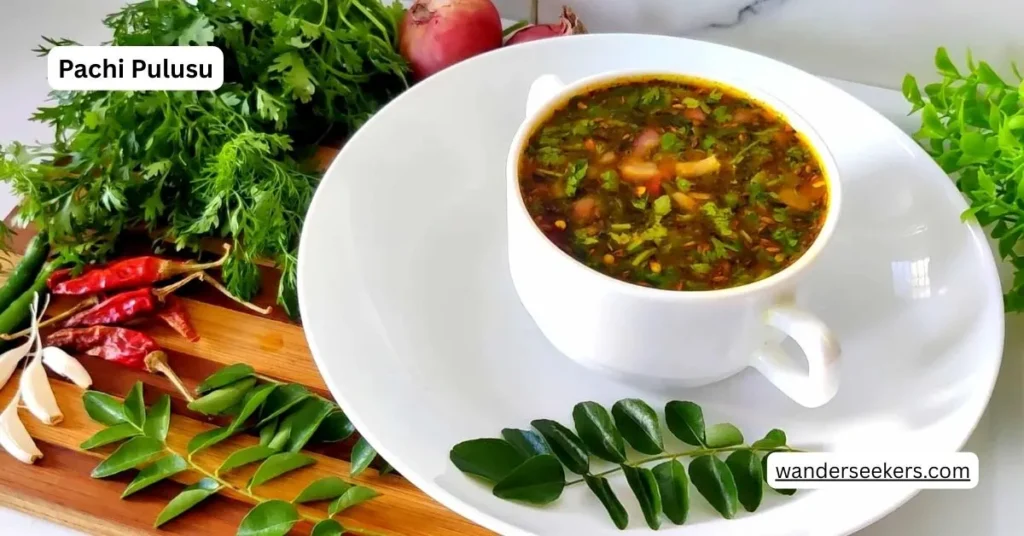
Pachi Pulusu is a traditional Telangana and Andhra Pradesh dish, known for its refreshing, tangy flavor and no-cook preparation. Unlike regular pulusu, which is simmered, Pachi Pulusu is made by simply mixing tamarind extract, onions, green chilies, jaggery, and spices, creating a light, watery consistency that is perfect for hot summers. The dish is often seasoned with coriander, curry leaves, and garlic, enhancing its depth of flavor. In mango season, tamarind is sometimes replaced with raw mango pulp, adding a fruity twist. Traditionally, Pachi Pulusu is served with steamed rice, accompanied by mudda pappu (plain dal) or a crispy fry, making it a comforting yet simple meal. Whether enjoyed at home or in a local eatery, this dish remains a symbol of Telangana’s culinary heritage.
4. Gutti Vankaya Kura
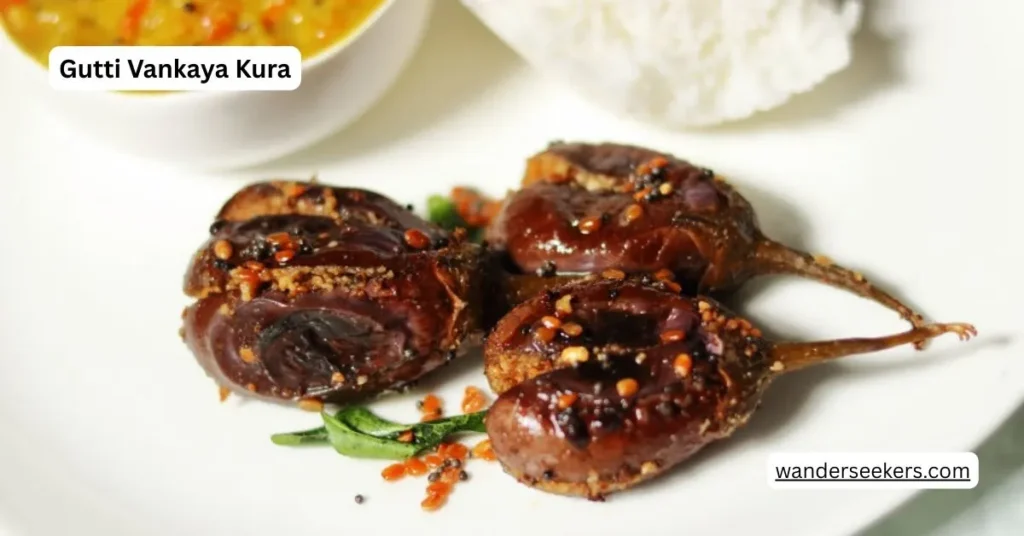
Gutti Vankaya Kura is a traditional Andhra-style stuffed brinjal curry, known for its rich, nutty flavors and aromatic spices. Small, tender eggplants are carefully slit and stuffed with a flavorful mixture of peanuts, sesame seeds, coconut, tamarind, and spices, creating a bold and tangy taste. The stuffed brinjals are then slow-cooked in a spiced onion-tomato gravy, allowing them to absorb the deep flavors while maintaining their soft texture. This dish is often paired with steamed rice and ghee, making it a comforting and satisfying meal. Gutti Vankaya Kura is a staple in Telugu households, enjoyed during festive occasions and family gatherings. Whether prepared in a home kitchen or a traditional Andhra restaurant, this dish remains an iconic part of South Indian cuisine.
5. Sakinalu
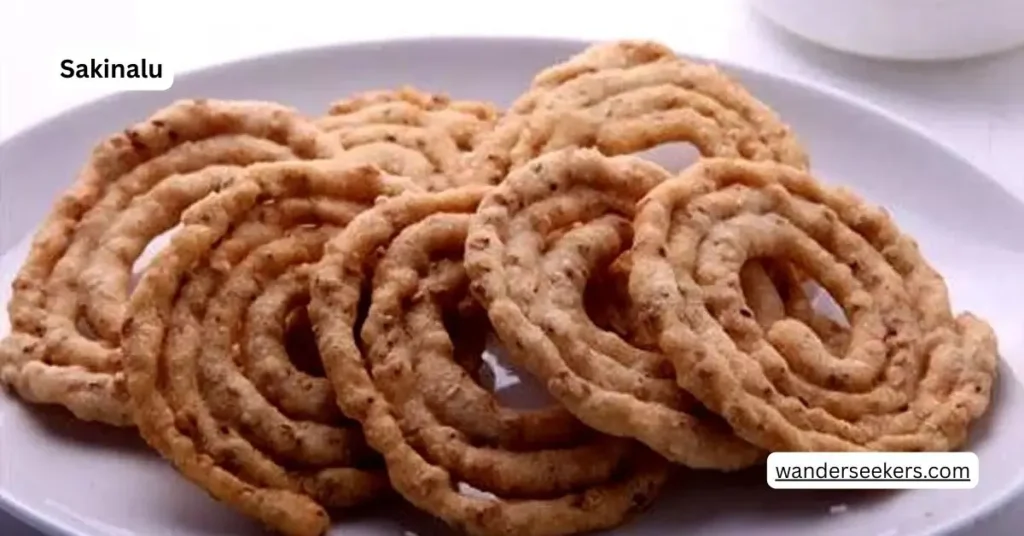
Sakinalu is a traditional Telangana snack, known for its crispy texture and unique circular shape. Made from rice flour, sesame seeds, ajwain (carom seeds), and salt, this deep-fried delicacy is prepared especially during Makar Sankranti, a harvest festival celebrated in Telangana. The dough is kneaded with spices, shaped into concentric circles, and fried until golden brown, creating a crunchy and flavorful treat. Sakinalu holds cultural significance, as it is often gifted by the bride’s family to the groom’s relatives during weddings, symbolizing festivity and togetherness. The dish is deeply rooted in Telugu traditions, where families gather to prepare large batches, sharing them with loved ones. Whether enjoyed as a festival snack or a nostalgic homemade treat, Sakinalu remains an iconic part of Telangana’s culinary heritage.
6. Gongura Pachadi
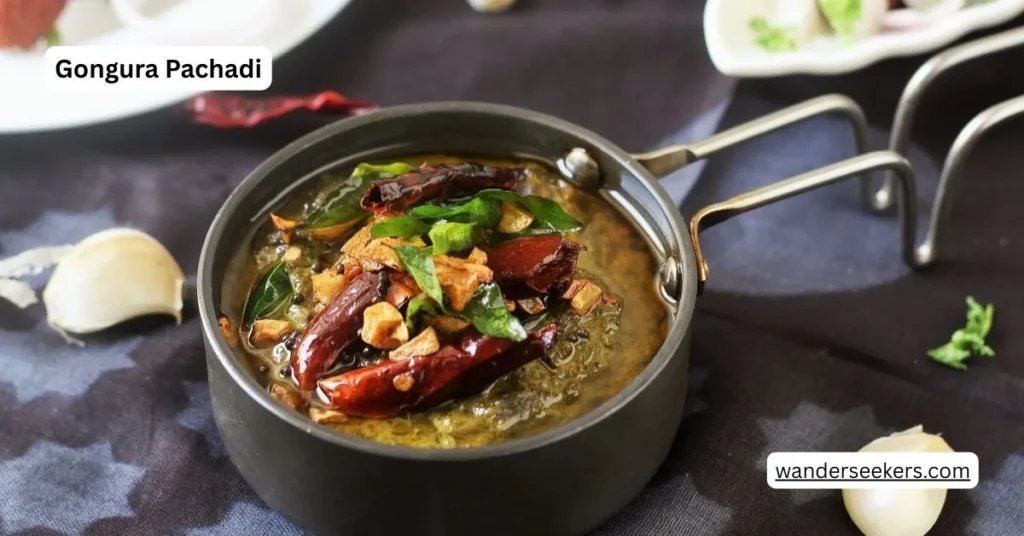
Gongura Pachadi is a traditional Andhra-style chutney, known for its bold, tangy flavor and nutrient-rich ingredients. Made from gongura leaves (sorrel leaves), this chutney has a distinctly sour taste that pairs beautifully with spices like red chilies, garlic, fenugreek seeds, and mustard seeds. The preparation involves sautéing gongura leaves until they wilt, then blending them with tempered spices, creating a thick, flavorful paste. Some variations include adding sesame seeds or tamarind, enhancing its depth of taste. Gongura Pachadi is often served with steamed rice and ghee, making it a comforting and satisfying meal. This dish is deeply rooted in Telugu cuisine, where gongura is widely used in pickles, dals, and curries. Whether enjoyed at home or in a traditional Andhra restaurant, Gongura Pachadi remains an iconic part of South Indian culinary heritage.
7. Jonna Rotte
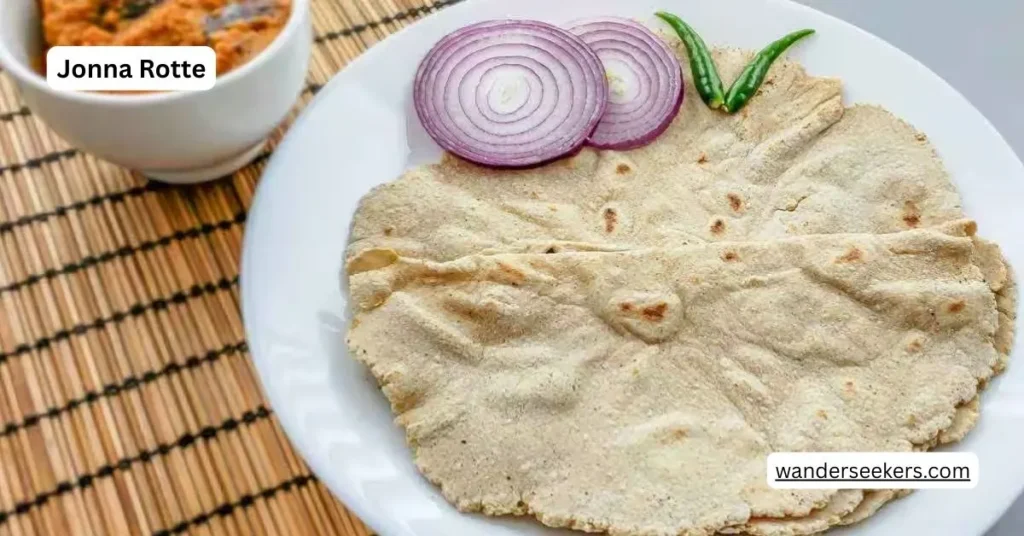
Jonna Rotte, also known as Jowar Roti, is a traditional Telangana and Andhra Pradesh flatbread, made from sorghum (jowar) flour. This gluten-free, nutrient-rich roti is a staple in South Indian households, known for its high fiber content and earthy flavor. The preparation involves kneading jowar flour with warm water and a pinch of salt, shaping it into thick rotis, and cooking it on a hot griddle, resulting in a soft yet slightly coarse texture. Unlike wheat rotis, Jonna Rotte is rolled by hand, as jowar lacks gluten, making it more delicate to handle. It is traditionally served with pappu (dal), chutneys, or spicy curries, enhancing its taste and nutritional value. This dish is especially popular among farmers and rural communities, offering sustenance and energy in the hot climate. Whether enjoyed at a home kitchen or a roadside eatery, Jonna Rotte remains an iconic part of Telangana’s culinary heritage.
8. Mirchi Bajji
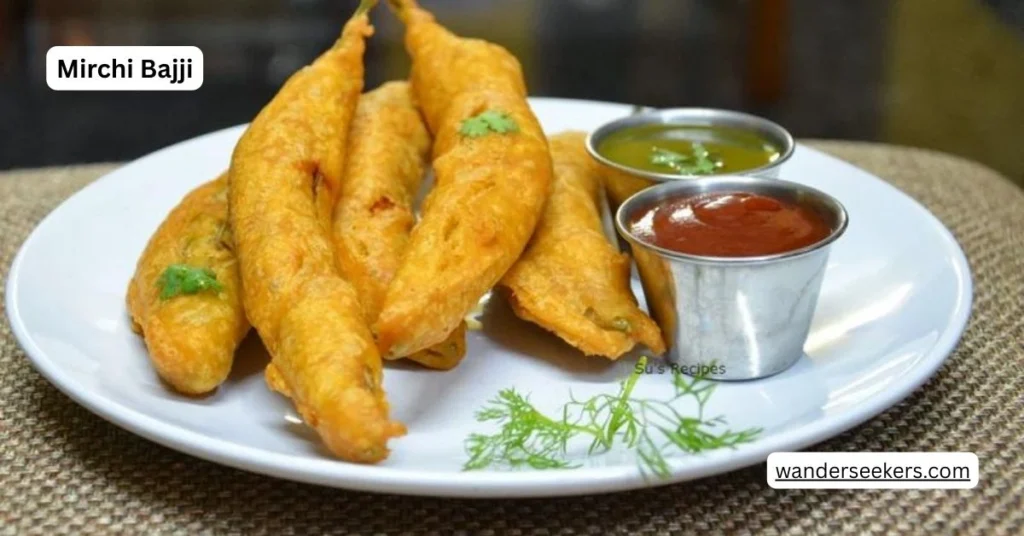
Mirchi Bajji is a beloved South Indian street food, known for its crispy texture and spicy kick. This deep-fried snack features large green chilies, dipped in a gram flour batter and fried until golden brown, creating a crunchy exterior with a soft, flavorful inside. The chilies are often deseeded to reduce their heat, making the dish a balanced mix of spice and crunch. Some variations include stuffing the chilies with a tangy onion mixture or tamarind paste, adding an extra layer of flavor. Mirchi Bajji is typically served with coconut chutney or mint chutney, complementing its bold taste. Whether enjoyed at a roadside stall or homemade with love, this snack remains an iconic part of South Indian cuisine.
9. Qubani Ka Meetha

Qubani Ka Meetha is a traditional Hyderabadi dessert, made from dried apricots, known for its rich, fruity flavor and velvety texture. The preparation involves boiling apricots until they soften, then mashing them into a thick, luscious compote. The dish is sweetened with sugar and often garnished with blanched almonds or apricot kernels, adding a delightful crunch. Traditionally, Qubani Ka Meetha is served with malai (thick cream), custard, or ice cream, enhancing its creamy consistency. This dessert holds a special place in Hyderabadi cuisine, frequently appearing at weddings and festive celebrations. Whether enjoyed warm or chilled, Qubani Ka Meetha remains an iconic part of Andhra and Telangana’s culinary heritage.
10. Double Ka Meetha
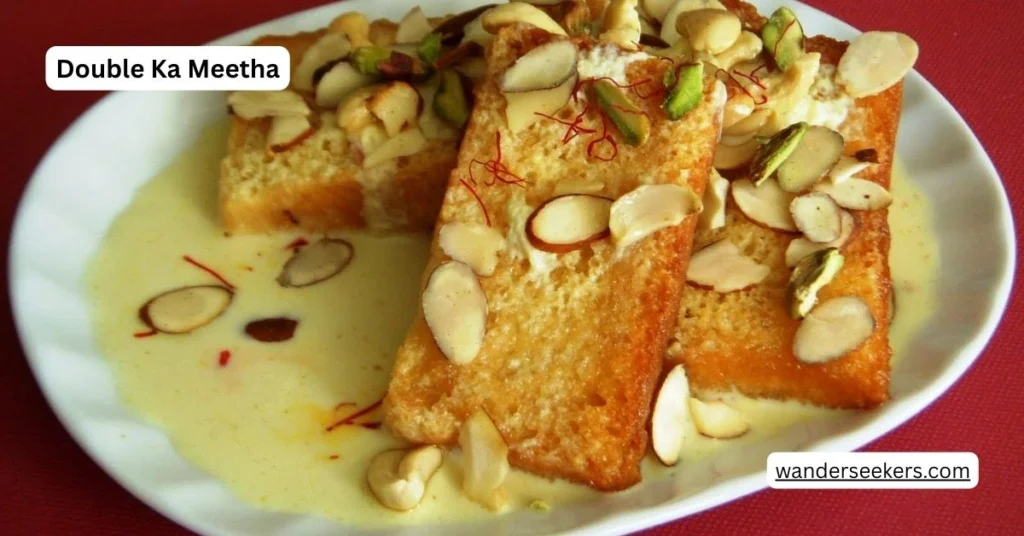
Double Ka Meetha is a traditional Hyderabadi dessert, known for its rich, aromatic flavors and indulgent texture. This sweet dish is made from deep-fried bread slices, soaked in sugar syrup and layered with thickened milk, cardamom, saffron, and dry fruits, creating a luscious, melt-in-the-mouth experience. The name Double Ka Meetha comes from double roti, a term used for milk bread, which expands to nearly double its size when baked. This dessert has deep roots in Deccani Mughlai cuisine, influenced by Persian and South Indian flavors, and is a staple at Muslim weddings, Eid celebrations, and festive gatherings. Whether enjoyed warm or chilled, Double Ka Meetha remains an iconic part of Hyderabad’s culinary heritage.
